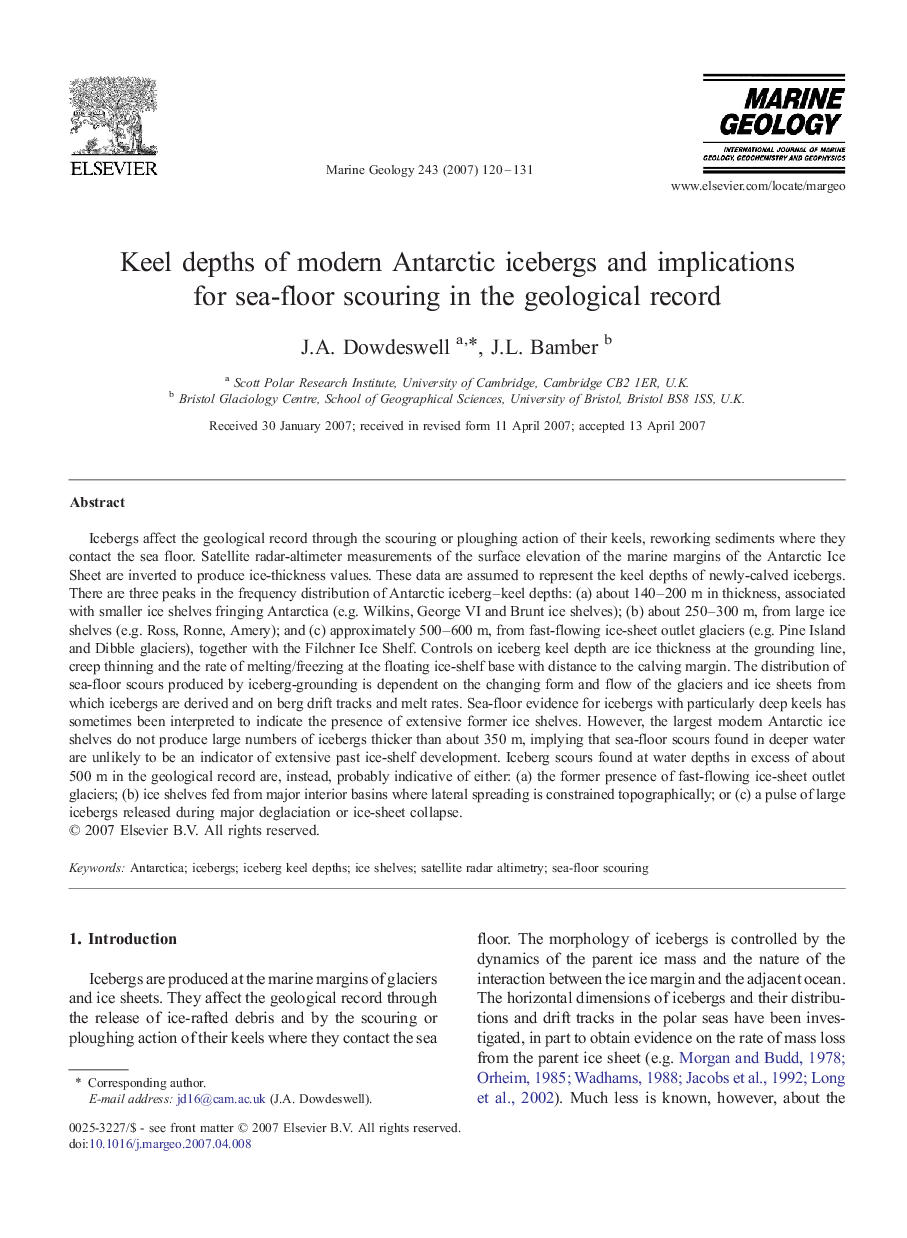| کد مقاله | کد نشریه | سال انتشار | مقاله انگلیسی | نسخه تمام متن |
|---|---|---|---|---|
| 4719365 | 1639192 | 2007 | 12 صفحه PDF | دانلود رایگان |

Icebergs affect the geological record through the scouring or ploughing action of their keels, reworking sediments where they contact the sea floor. Satellite radar-altimeter measurements of the surface elevation of the marine margins of the Antarctic Ice Sheet are inverted to produce ice-thickness values. These data are assumed to represent the keel depths of newly-calved icebergs. There are three peaks in the frequency distribution of Antarctic iceberg–keel depths: (a) about 140–200 m in thickness, associated with smaller ice shelves fringing Antarctica (e.g. Wilkins, George VI and Brunt ice shelves); (b) about 250–300 m, from large ice shelves (e.g. Ross, Ronne, Amery); and (c) approximately 500–600 m, from fast-flowing ice-sheet outlet glaciers (e.g. Pine Island and Dibble glaciers), together with the Filchner Ice Shelf. Controls on iceberg keel depth are ice thickness at the grounding line, creep thinning and the rate of melting/freezing at the floating ice-shelf base with distance to the calving margin. The distribution of sea-floor scours produced by iceberg-grounding is dependent on the changing form and flow of the glaciers and ice sheets from which icebergs are derived and on berg drift tracks and melt rates. Sea-floor evidence for icebergs with particularly deep keels has sometimes been interpreted to indicate the presence of extensive former ice shelves. However, the largest modern Antarctic ice shelves do not produce large numbers of icebergs thicker than about 350 m, implying that sea-floor scours found in deeper water are unlikely to be an indicator of extensive past ice-shelf development. Iceberg scours found at water depths in excess of about 500 m in the geological record are, instead, probably indicative of either: (a) the former presence of fast-flowing ice-sheet outlet glaciers; (b) ice shelves fed from major interior basins where lateral spreading is constrained topographically; or (c) a pulse of large icebergs released during major deglaciation or ice-sheet collapse.
Journal: Marine Geology - Volume 243, Issues 1–4, 6 September 2007, Pages 120–131